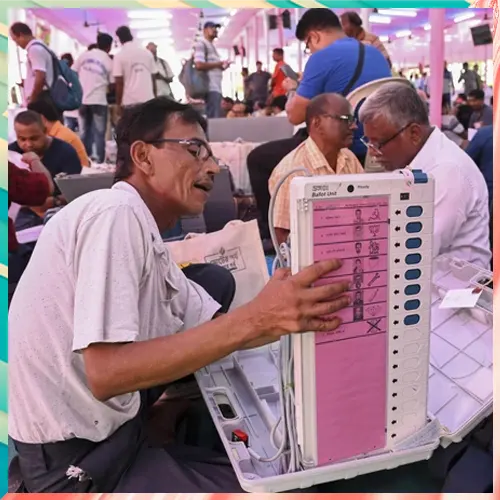Breaking News

Bihar Elections 2025 are set to witness a major technological upgrade in India’s democratic process, as the Election Commission of India (ECI) introduces new voter-friendly reforms for Electronic Voting Machines (EVMs).
For the first time, EVMs will display candidates’ photographs in color, replacing the earlier black-and-white format. Candidate names and serial numbers will also appear in larger, easy-to-read fonts, making the ballot design more transparent and reducing voter confusion. Officials believe these changes will improve accessibility, ensure fair identification, and boost trust in the voting process.
Under the new guidelines, candidate photos, names, and party symbols will appear in a standardized format, with serial numbers printed in a 30-point font for better visibility. Lok Sabha ballots will now use white paper instead of pink, while the “None of the Above” (NOTA) option remains unchanged, continuing to provide voters with an independent choice.
The Election Commission has also addressed concerns around voter age verification. Citizens born before July 1, 1978, will no longer need to provide documentary proof of age; instead, a sworn affidavit will be accepted. This change is designed to simplify voter registration and minimize unnecessary hurdles, particularly for senior citizens.
Officials clarified that the voter list updates, disrupted between 2002 and 2004, will serve as the baseline for integrating new voters into electoral rolls. A formal notification is expected soon.
These reforms mark a historic step in India’s electoral modernization, ensuring that EVM technology, transparent processes, and simplified voter verification create a more inclusive, accessible, and trustworthy election. Bihar will serve as the first major test ground for these reforms, setting the stage for future state and national elections.
For the first time, EVMs will display candidates’ photographs in color, replacing the earlier black-and-white format. Candidate names and serial numbers will also appear in larger, easy-to-read fonts, making the ballot design more transparent and reducing voter confusion. Officials believe these changes will improve accessibility, ensure fair identification, and boost trust in the voting process.
Under the new guidelines, candidate photos, names, and party symbols will appear in a standardized format, with serial numbers printed in a 30-point font for better visibility. Lok Sabha ballots will now use white paper instead of pink, while the “None of the Above” (NOTA) option remains unchanged, continuing to provide voters with an independent choice.
The Election Commission has also addressed concerns around voter age verification. Citizens born before July 1, 1978, will no longer need to provide documentary proof of age; instead, a sworn affidavit will be accepted. This change is designed to simplify voter registration and minimize unnecessary hurdles, particularly for senior citizens.
Officials clarified that the voter list updates, disrupted between 2002 and 2004, will serve as the baseline for integrating new voters into electoral rolls. A formal notification is expected soon.
These reforms mark a historic step in India’s electoral modernization, ensuring that EVM technology, transparent processes, and simplified voter verification create a more inclusive, accessible, and trustworthy election. Bihar will serve as the first major test ground for these reforms, setting the stage for future state and national elections.
See What’s Next in Tech With the Fast Forward Newsletter
Tweets From @varindiamag
Nothing to see here - yet
When they Tweet, their Tweets will show up here.





























